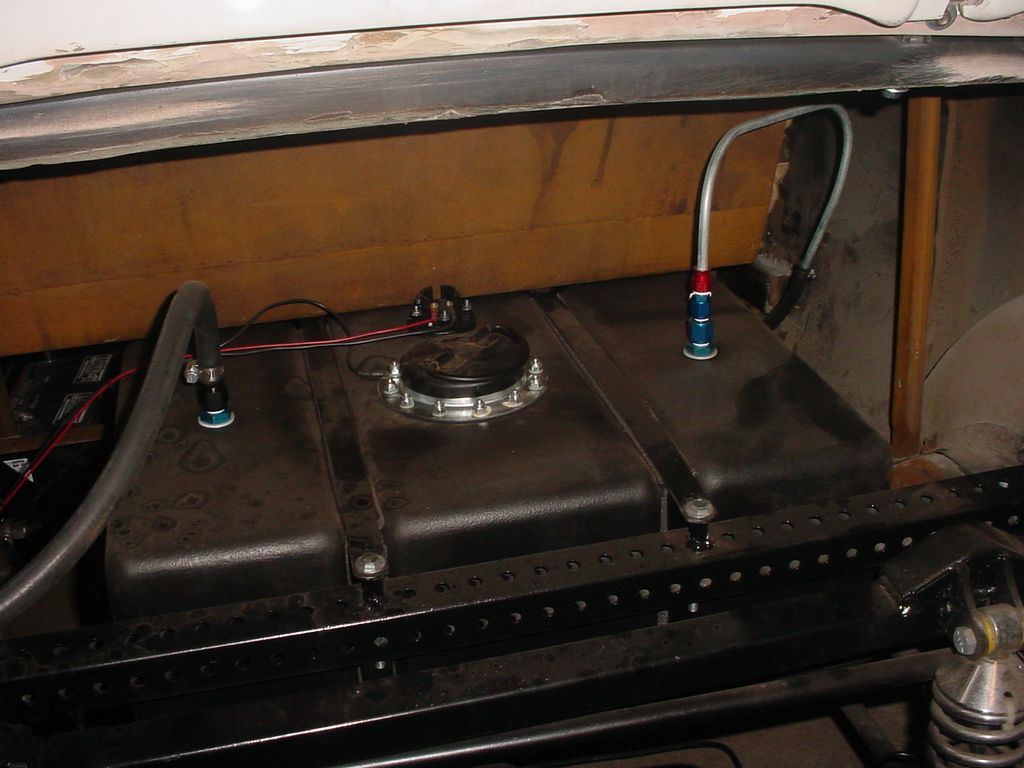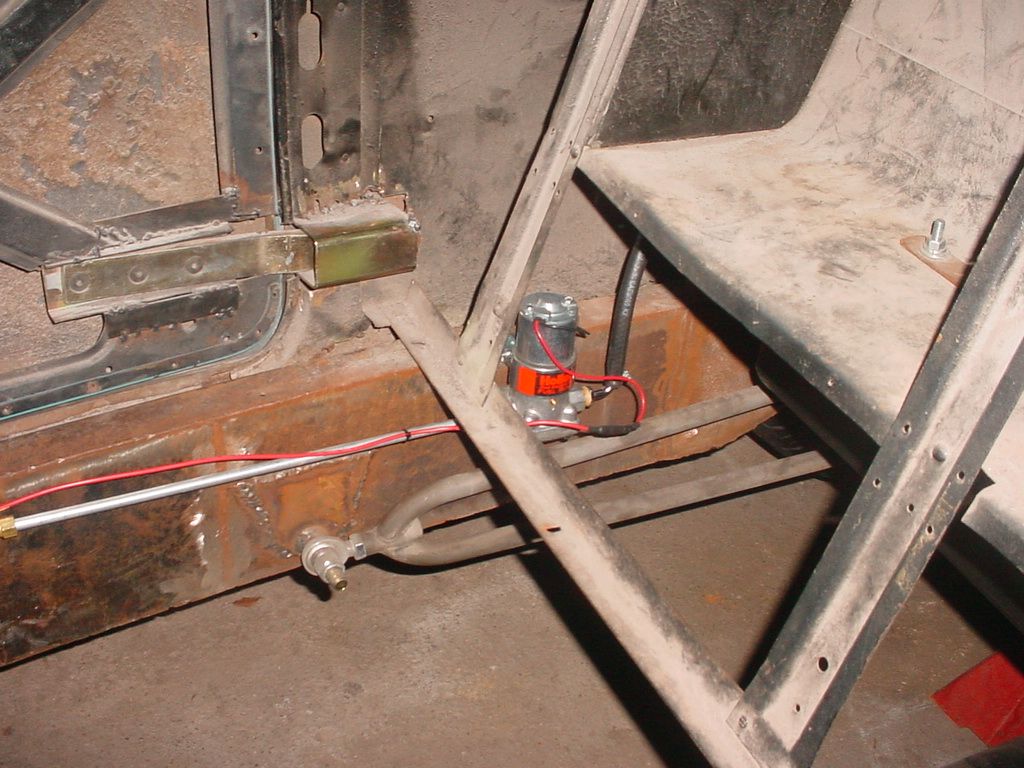In PRACTICAL terms, unless you are running some 800 hp monster, most "street" pumps are DESIGNED for some amount of suction. In general terms, the CLOSER you get to the tank, the larger and less restricted you make the suction line (larger diameter, free flowing or no screens or filters, and a minimum of elbows) this helps to DROP the suction restriction pressure, which you can actually MEASURE with the proper gauges. A good quality vacuum gauge is probably all you really need.
The analogy is a water well pump. The old "shallow" pumps can only "suck" so far, so "back then" they put a water jet at the bottom to boost it, and finally, moved the pump right to the bottom of the well.
It matters not what kind of fan/ blower/ pump you are using, more push and less "pull" is what you want.
So, without causing a danger from damage or collision, mount the pump as low and as far to the rear as you can.
By the way, SOMEPLACE I even read an article once about outlet line size. The allegation was --specifically so far as drag racing--that an outlet tube that got "too large" held enough weight (mass) of fuel (the length of the car) that under hard acceleration this acted as "false head pressure" against which the pump had to work.
I haven't calculated the fuel mass in say, no 10 tube for 8 or 10 feet or whatever, so donnooooo
Another article was speaking of the popular motor drive, internal bypass pumps, and the idea was that when in bypass (idle, light cruise) under low-flow conditions, they may be their own enemy, the impeller churning up and heating the fuel, adding to possible vapor lock problems.
This does make some sense, and is an argument FOR a vapor return (orifice) system / or a front mount, external bypass regulator.
This alleged problem is one that mechanical pumps don't have, nor do the old "pulser" pumps of my day---they simply stopped pumping when pressure built up.


















